DIY Video Studio is supported by its readers who use the affiliate links or ads on this site. As an Amazon Associate, I earn from qualifying purchases. Thank your support if you use any of the links.
If you have found your way to this article you probably know what extension tubes are or have at least heard of them. If by some chance you don’t know what they are check out my article What are Extension Tubes and what do they do?
Another reason you may have found this article is that you are into bird or wildlife photography but still want more reach from your telephoto lens. To get a good understanding of how macro extension tubes can increase the magnification of your telephoto lens, keep reading. But if you’re in a hurry, click the following link to see how much magnification I got by adding extension tubes to my Sigma 150-600mm telephoto lens, including example images.
- AF:Support autofocus, recommended to use the manual mode to change the shutter speed directly to...
- 3 different combinations:Can be used alone or in superimposed(13mm,18mm,13+18mm)
- Macro:Getting closer has the effect of magnifying your subject (making it appear larger in the...
- Structural designing pays great attention to make as comfortable as possible in hand and seems like...
Last update on 2024-03-10 / Affiliate links / Images from Amazon Product Advertising API
Why use macro extension tubes with a telephoto lens?
As strange as it may seem, macro and bird photographers have a lot in common. They both want plenty of magnification from their camera lens to reveal the fine detail of their subject.
Macro photographers do this by using lenses designed to have a magnification ratio of 1:1 and a short Minimum Focusing Distance. They might even boost the lens’ magnification by adding macro extension tubes between the lens and camera body so they can get even closer to the subject.
Bird photographers take a different approach, mainly because birds are skittish and more a lot faster than flowers and insects. Since bird photographers normally cannot get close to their subject, they use long focal length lenses to magnify the subject.
Either way, the result for the birder and the macro photographer is the same, the subject appears much larger in the frame.
Generally, you wouldn’t use a macro lens for bird photography, but what about the extension tubes that macro photographers use?
If extension tubes can help boost the magnification of a macro lens, could they do the same for a telephoto lens?
It turns out that you can increase the magnification of a telephoto lens by using extension tubes.
Although extension tubes are completely empty of any optics, they can increase the magnification of a telephoto lens at very little cost. However, there are drawbacks, such as the loss of infinity focus, dimming of the image, and possibly image degradation.
In this article, I will demonstrate the effect of using extension tubes with my Sigma 150-600mm telephoto lens. Although the exact details may be different for other telephoto lenses, you should see a magnifying effect when using macro extension tubes with any telephoto lens.
Do Extension Tubes increase the focal length of a telephoto lens?
Strictly speaking, the stated focal length of a lens is the focal length at infinity focus. Although this nominal value does not change when extension tubes are fitted, the effective focal length of the lens does change.
This may seem odd since extension tubes contain no glass elements and are effectively spacers between the lens and the camera body. But it is that extra distance that changes how far the lens can now focus. This extra length has a few effects on the way the lens behaves. It changes the magnification, speed, depth of field, plus the and minimum and maximum focusing distances of the lens.
When it comes to bird photography the minimum focusing distance only becomes a consideration if you’re too close to the subject since you won’t be able to focus on the bird. However, the lens magnification, speed, depth of field, and whether the image quality is degraded are higher priorities. I’ll provide more details on each before giving real-world results from my Sigma 150-600mm telephoto lens.
What Magnification Can I Expect with Extension Tubes?
The boost in lens magnification is one of the things that can be calculated if you know the native focal length of the lens, the extension tube length, and the Maximum Magnification (MM) or Maximum Magnification Ratio (MMR) of the lens.
Unfortunately, the maximum magnification relates to the minimum focusing distance of the lens, which in the case of a zoom telephoto like my Sigma, is at the shortest focal length setting of 150mm. That’s OK if you wish to use your telephoto lens for macro photography, but for bird photography, I would be more interested in knowing the magnification at 600mm.
Understandably, lens manufacturers want to publish the “best” specifications for marketing purposes. What also complicates things is the issue of focus breathing, where a zoom telephoto lens at shorter distances appears to deliver less focal length at full zoom than stated on the lens barrel.
But to move forward, let’s keep this simple and deal with the maximum magnification of the lens.
If a lens has a Maximum Magnification Ratio of 1:5 it has a Maximum Magnification of 0.2. Remember, a ratio is the first number (numerator) divided by the second number (denominator). So, a ratio of 1:5 is the same as 0.2.
To calculate the extra magnification of the lens gained by adding an extension tube, divide the extension tube length by the focal length of the lens. Now add this gain to the original magnification of the lens to give the new total magnification.
The extension tubes magnification formula looks like this
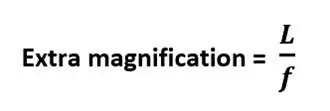
where L is the extension tube length, f is the focal length of the lens.
The total magnification, M, is the original lens magnification, m, plus the extra magnification. The formula for the total magnification becomes
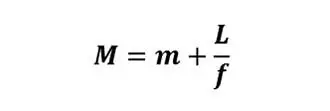
What telephoto lens focal length to use for the most magnification
We now have a formula that will help us calculate the gain in magnification when adding extension tubes to a telephoto lens. Let’s put in a few numbers for a couple of scenarios to see what the formula is telling us.
First, let’s assume we fit a 10mm extension tube to a 100mm focal length lens. The gain in magnification, m, is 10/100, or 0.1. But if we switch the 10mm extension tube for one that’s 50mm, the magnification gain becomes 50/100, or 0.5. So, for a given lens, you’ll gain more magnification by using longer extension tubes.
But bird photographers usually use longer focal length lenses, often around 500mm. So how does that change the situation?
With a 10mm extension tube, the gain in magnification is 10/500, or 0.02, while adding a 50mm extension tube results in a magnification gain of 50/500, or 0.1.
Again, the longer the extension tube the greater the gain in magnification. But you may have noticed something else. When using extension tubes with shorter focal length lenses produces the most magnification. Unfortunately, to see the maximum benefit, the photographer would need to get very close to the bird.
In the real world, a bird photographer who uses extension tubes to boost lens magnification will choose longer focal length lenses. This is because:
- you don’t want to approach too closely to the bird.
- the maximum focusing distance is small for lenses with focal lengths of under 300mm.
Due to changes to the minimum and maximum focusing distance of a lens fitted with an extension tube, it is best to use a telephoto lens with a focal length of 400mm or more. A longer focal length allows you to get the subject in focus from a reasonable distance instead of needing to get very close to the subject.
To understand this more clearly, let me explain the maximum focusing distance of a lens once you add an extension tube.
Maximum Telephoto Focusing Distances with Extension Tubes
Adding extension tubes will affect the way you can use your telephoto lens. The difference you will notice straight away is that you cannot focus on objects that are far away. You will have lost infinity focus. But how far can you focus once you’ve added extension tubes to your telephoto lens?
Just like we could arrive at a formula for the magnification of the lens fitted with an extension tube, it is possible to write down a formula for the minimum and maximum focusing distances (i.e., the shortest and longest you can focus). Unfortunately, the formula is very cumbersome. For anyone needing the details, see the excellent paper by Douglas A. Kerr on The Mathematics of Extension Tubes in Photography.
If you prefer to stay clear of mathematics, let me give you practical examples based on results from experiments with my Sigma 150-600mm f5-6.3 SPORT DG OS HSM after adding 22, 27, and 32mm extension tubes.
As well as measuring the Minimum Focusing Distance (MFD) I also measured the Maximum Focusing Distance. If you have a different telephoto lens you should find that my results are “in the ballpark” of what you can expect.
Here is my data for the maximum focusing distance using a Sigma 150-600mm zoom telephoto lens at different focal lengths and using three different lengths of extension tubes.
| Focal Length (mm) | Max Focusing Dist with 22mm Ext. Tubes | Max Focusing Dist with 27mm Ext. Tubes | Max Focusing Dist with 32mm Ext. Tubes |
|---|---|---|---|
| 150mm | 1.45m | 1.27m | 1.12m |
| 200mm | 2.27m | 1.97m | 1.72m |
| 300mm | 5.09m | 4.21m | 3.45m |
| 400mm | 9.05m | 7.39m | 6.33m |
| 500mm | 13.85m | 11.38m | 9.68m |
| 600mm | 18.85m | 15.46m | 13.25m |
Although this table is useful, trends in data are usually easier to see when the data is plotted in a chart. In the following chart, the maximum focusing distance is plotted against the focal length. The blue curve is for 22mm extension tubes, the orange curve is for 27mm extension tubes, and the gray curve is for 32mm extension tubes.
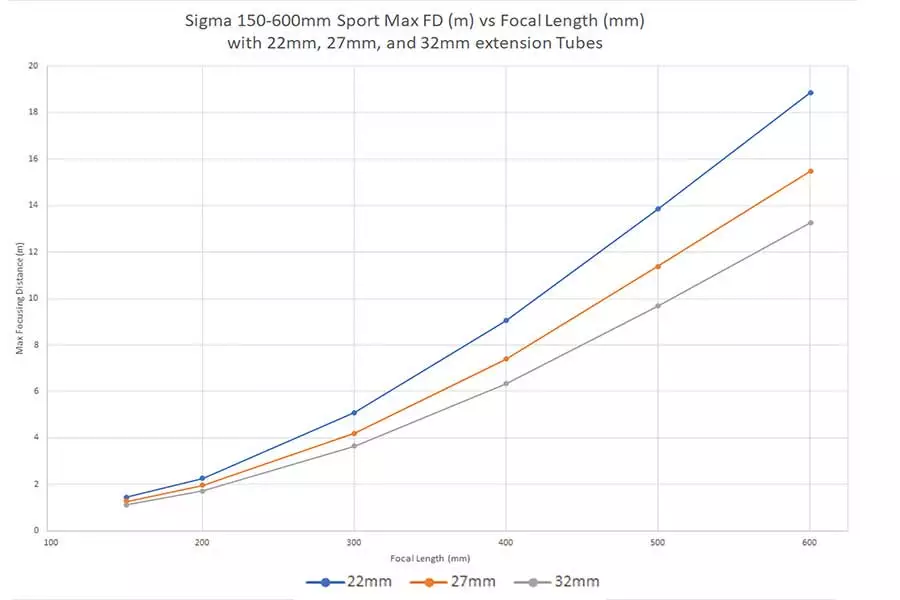
From the chart you should now see why using extension tubes to boost the magnification at lower focal lengths is not going to be effective, unless you are photographing tame birds. With the Sigma at a focal length of 200mm, I would need to be closer than about 6ft (2m) to the bird. At a focal length of 400mm I would need to be closer than 19-30ft (6-9m), depending on which extension tubes I was using.
You can also see; the chart supports my suggestion that you would probably use a focal length of about 400mm if adding extension tubes. Using a focal length of 400mm or more would give more flexibility in the distance from which you can shoot.
With that knowledge, let’s see the kind of magnification you can get by adding extension tubes to a telephoto lens.
Using Extension Tubes with a Telephoto Lens for more Magnification
The example images were all shot with a Canon EOS R6 and Sigma 150-600mm lens at the maximum focal length. The distance between the subject was about 5m. The technical details for each of the four images are indicated along with each image. Image 1 is our reference image where the magnification is regarded to be 1x.
Image 1: 600mm focal length
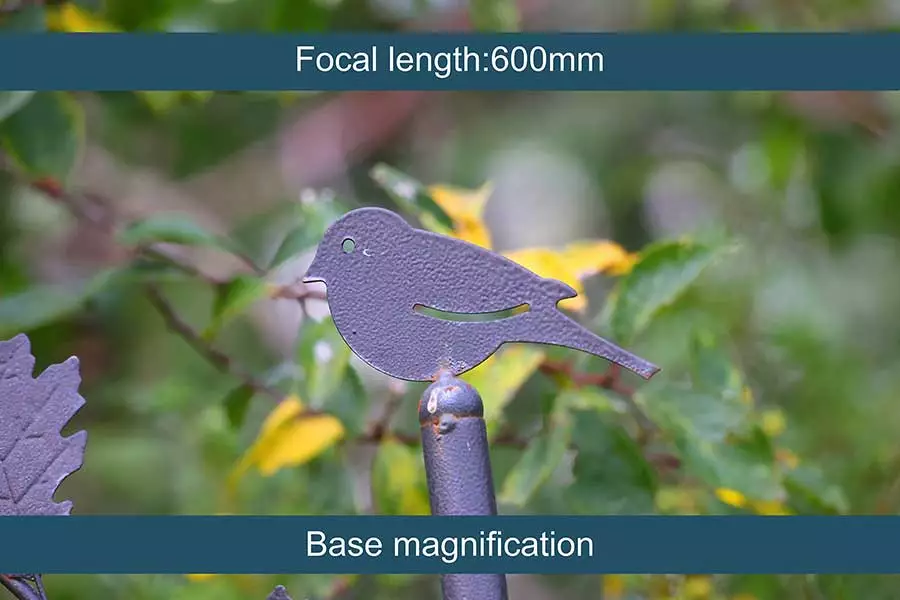
Image 2: 600mm focal length + 54mm extension tube
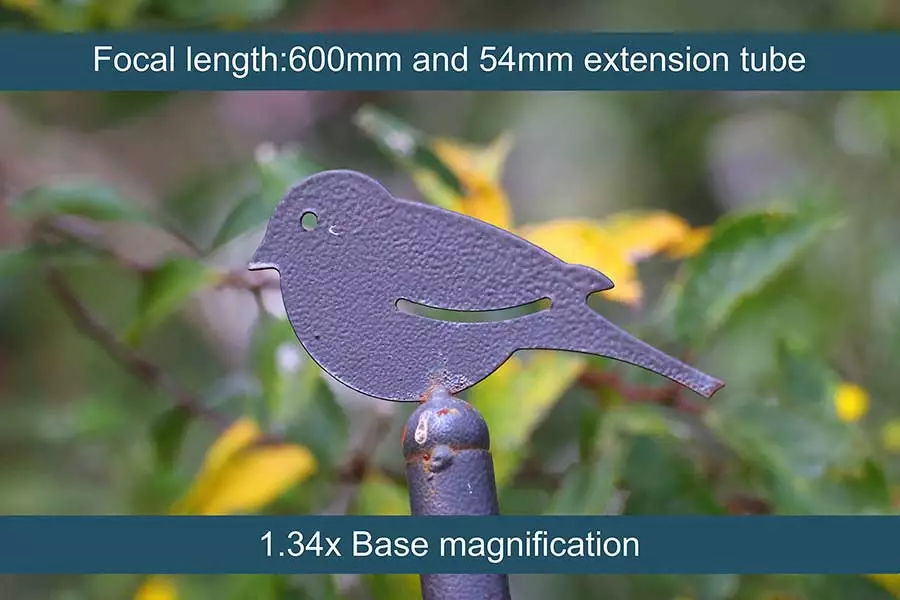
Image 3: 600mm focal length + 1.4x teleconverter
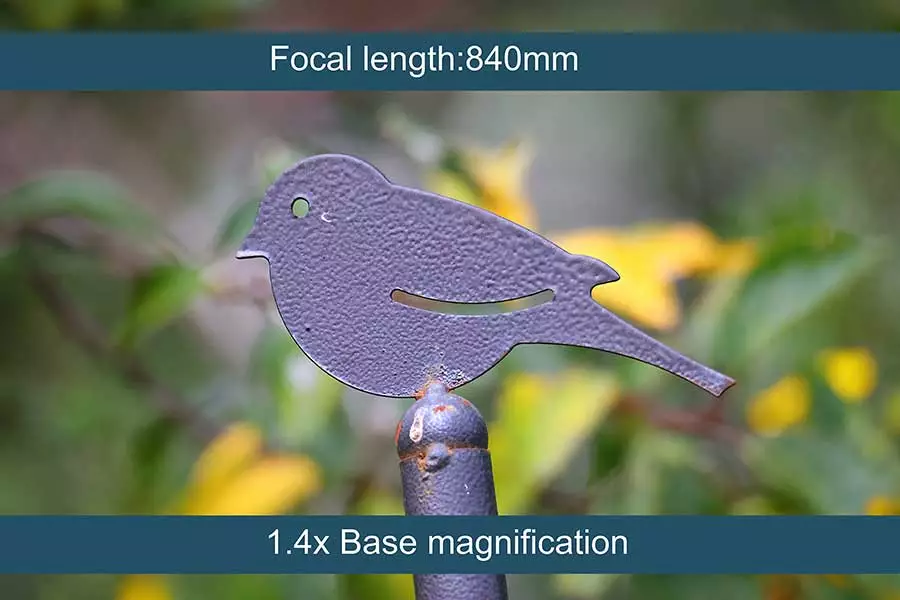
Image 4: 600mm focal length + 1.4x Teleconverter + 54mm extension tube
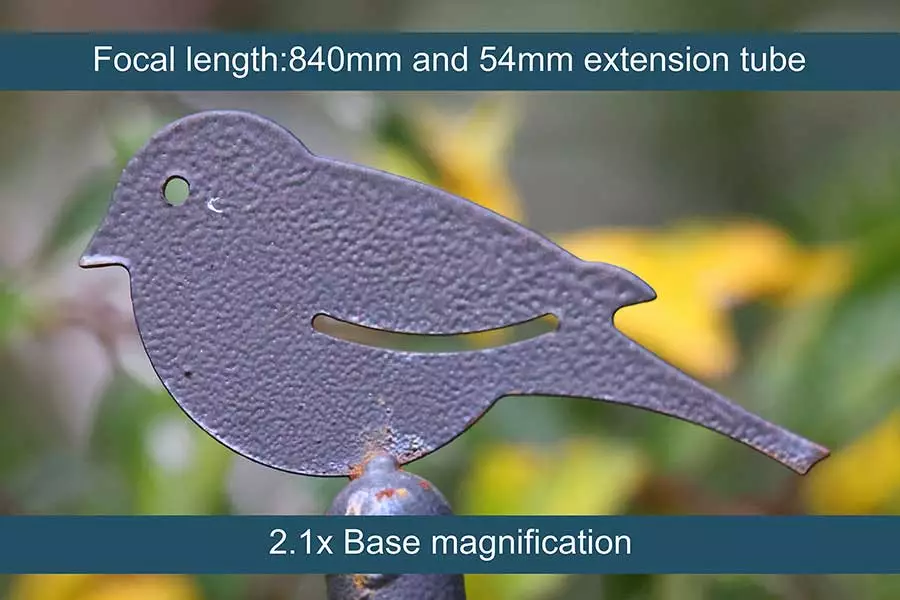
To make it easier to compare the four images I have created one image with all four shots side-by-side.
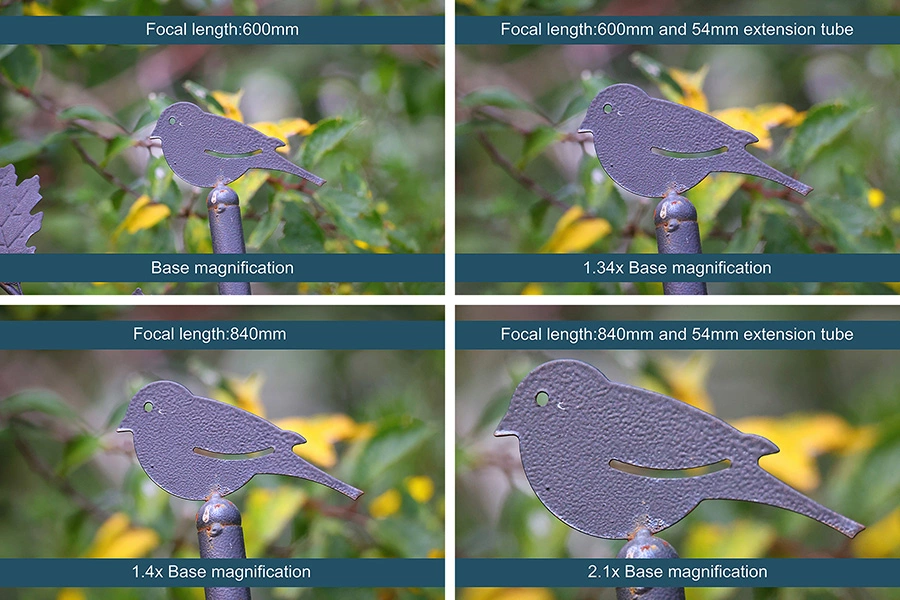
Just in case you were wondering whether the Sigma + EOS R6 could still autofocus when the extension tubes were added, I’m pleased to report that autofocus still worked. In fact, animal eye-autofocus still worked even after adding a 1.4x teleconverter to the extension tubes. However, the speed of the autofocus was slower when the 54mm extension tubes were added.
The following image of a Moorhen was handheld with the Sigma at 600mm and the addition of the 54mm extension tube. Unfortunately, the Sigma Sport lens is too heavy for me to handhold and get a steady enough shot when the 1.4x teleconverter and the 54mm extension tube were on the lens.
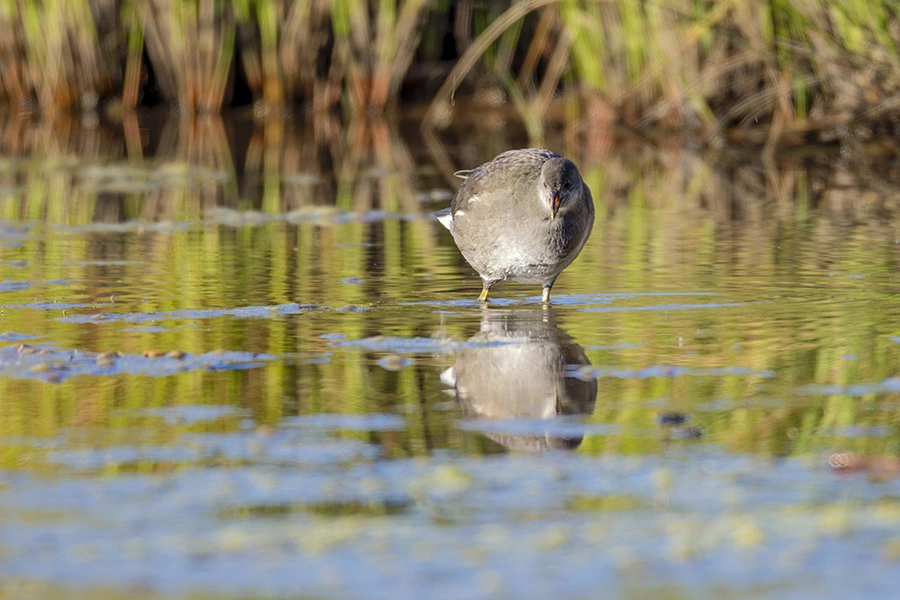
The test images were opened in Photoshop and the horizontal distance between the bird’s beak and tail was measured (in pixels). The measurements are given below and compared.
| Image | Bird Size | Size Relative to Image 1 | Equivalent focal length |
|---|---|---|---|
| 1 | 2178px | 1x | 600mm |
| 2 | 2909px | 1.34x | 804mm |
| 3 | 3047px | 1.4x | 840mm |
| 4 | 4576px | 2.1x | 1260mm |
The data is based on my real-world test and not on a calculation based on a theoretical formula.
What surprised me most was how much of an effect the 54mm extension tube had on image magnification with the Sigma telephoto lens. Adding the 54mm extension tube to the 600mm Sigma increased the apparent magnification by 1.34x. That’s almost the same as adding the 1.4x teleconverter, but at a lower cost.
Adding a 1.4x teleconverter and the 54mm extension tube to the 600mm Sigma had even more of a dramatic effect. The measurement from the image showed that the combination of the extender and extension tube boosted the magnification by 2.1x. That’s like having an equivalent focal length of 1260mm.
There didn’t seem to be much loss of image quality by adding the extension tube. However, there was a loss of about one stop of light and the speed of the autofocus felt slightly slower.
I’m not convinced the autofocus speed would be an issue if I were using a native lens on my EOS R6 rather than a Sigma lens with a Canon EF mount adapted to my RF mount. I may repeat the test when I get the Canon RF100-500mm telephoto lens to see the effect of using a native lens. It would also be worth doing the test with a prime telephoto lens rather than a zoom telephoto.
Adding an extension tube to a telephoto lens does increase the magnification or apparent focal length of the lens. The increase in magnification is greatest with longer extension tubes, but to work over useful focusing distances a telephoto lens with a focal length of 400mm or more needs to be used.
If you need extra magnification, at minimal extra cost, you may want to add an extension tube or two to your telephoto lens. However, this may not be the ideal way of gaining extra magnification. But depending on the lens you are using you may get good results, as I did with the Sigma 150-600mm lens.
The following list summarizes the effect of using extension tubes with a telephoto lens.
- Increasing the extension tube length increases the magnification.
- Increasing the extension tube length reduces the maximum focusing distance.
- Using lenses with longer focal lengths increases the maximum focusing distance.
- As the extension tube length increases more light is lost, which needs to be compensated for by using longer shutter speeds and/or a higher ISO.
- Image quality may be degraded when adding an extension tube to a telephoto lens because the lens is forced to work outside its design limits.
But before you decide to replace an expensive teleconverter with a cheap extension tube you need to know whether the magnifying effect is the same at all distances? After all, my test images were taken at a relatively close distance to the subject.
That’s why I repeated the test. Instead of using the bird ornament, I needed a larger subject, since I would be taking photographs at distances of up to 19m (the longest uninterrupted distance in my backyard). I, therefore, decided to use a 30cm ruler. Not only was it larger but the printed scale could be measured in Photoshop.
I took photographs at distances of 3m, 4m, 5m, 6m, 7m, 8m, and 19m. Although with just the 54mm extension tube on the Sigma lens at 600mm, the maximum focusing distance was about 8.5m. With the 1.4x teleconverter added, the maximum focusing distance was more than the 19m of space I had available.
At the shortest distances, the ends of the ruler were beyond the edges of the image frame. However, I was able to calculate the equivalent length, in pixels, of the ruler. I could then calculate the magnifying effect, compared to the ruler size when imaged using just the 600mm lens. Here is a table of the magnifying effect at various distances.
| Subject distance | Just lens at 600mm | Lens + 54mm Extension Tube | Lens + 1.4x Teleconverter | Lens + 54mm Extension Tube + 1.4x Teleconverter |
|---|---|---|---|---|
| 3m | 1x | 1.38x | 1.39x | 2.10x |
| 4m | 1x | 1.30x | 1.37x | 2.05x |
| 5m | 1x | 1.30x | 1.40x | 2.09x |
| 6m | 1x | 1.32x | 1.39x | 2.09x |
| 7m | 1x | 1.32x | 1.39x | 2.08x |
| 8m | 1x | 1.32x | 1.39x | 2.08x |
| 19m | 1x | NA | 1.39x | 2.08x |
When taking into account measurement errors (both in the images and the camera-to-subject distance) the table shows that the magnification in each configuration is consistent at all test distances. Furthermore, they are the same as when using the bird ornament as the test subject.
Rounding to one decimal point, when adding a 54mm extension tube to the 600mm lens the image was magnified by 1.3x. When adding a 54mm extension tube and a 1.4x teleconverter to the 600mm lens the image was magnified by 2.1x.
- This extender seamlessly attaches to select RF series lenses
- Increases the focal length by a factor of 1.4x
- Max focal length: 1.4
- Package Dimensions: 12.192 L x 18.542 H x 12.192 W (centimeters)
Last update on 2024-03-10 / Affiliate links / Images from Amazon Product Advertising API
Pros and Cons of adding extension tubes to a telephoto lens
In life, you seldom get something for free. That’s also the case when trying to boost the magnification of a telephoto lens by adding extension tubes. However, if you are aware of the pros and cons you can decide whether the pros sufficiently outweigh the cons.
In my experience, my autofocus was a little slower (forget tracking flying birds), and the images seemed a little softer and had less contrast. Initially, the depth of field was shallower, but it became acceptable by changing the aperture to f/11.
| PROS | CONS |
|---|---|
| More magnification | Autofocus can be slower |
| Low additional cost | Loss of light |
| Easy to use | Images may be softer |
| Autofocus still works | Possible loss of contrast |
| Animal eye AF works | Chromatic aberration may be an issue |
To help you decide here are two example images shot with a 54mm extension tube and 1.4x teleconverter on my Sigma telephoto zoom at 600mm.

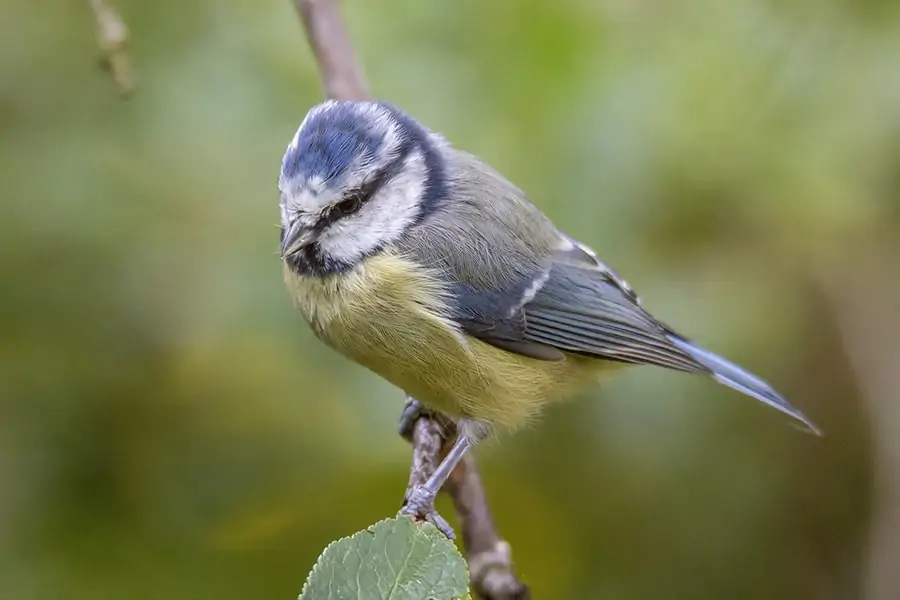
People also ask
Having shown that extension tubes can boost the magnification of a telephoto lens let me answer a handful of questions you may also have about using a telephoto lens with macro extension tubes.
Do extension tubes reduce the amount of light and exposure?
People often say that fitting an extension tube to a lens will result in a loss of light. In fact, no light is lost by the extension tube, at least in the way some light might be lost when passing through a lens element.
Even though there are no optical elements in the extension tube to absorb light, the image can still appear dimmer. By adding the extension tube the image has effectively been magnified, therefore some of the images will fall beyond the edges of the sensor and be “lost”. So, with an extension tube in place, the sensor only records part of the total illuminance that would have otherwise filled the sensor.
The effective f-number depends on the f-number of the lens plus the product of the f-number and magnification. As a math equation, it looks like this
n’ = n x (1 + 1n)
The increase in the effective f-number is more noticeable when the extension tube is used as a tool in macro photography, where the exposure can be affected by around 2-stops. But when used on telephoto lenses where the focal length focus distance is longer, magnification is not as great, and the exposure is not impacted as much.
This means that if we try using extension tubes to increase the effective magnification of a telephoto lens, and shoot at near to the maximum focusing distance, we should be able to minimize the so-called loss of light.
In other words, we shouldn’t be hugely affected by any drop in light when using extension tubes on a telephoto lens for birding. This is especially true if using a modern mirrorless camera such as the Canon EOS R6. It can autofocus at higher f-numbers and produces less noise at higher ISOs.
Do Extension Tubes Degrade the Quality of the Image?
Extension tubes do not degrade image quality by affecting the light, because they contain no optics. However, the extra magnification on some lenses may reveal flaws in the image due to the lens being used in a way that is not intended by the designer.
If the image quality is degraded, it is more to do with the lens design and not the extension tube. It may even be the case that an expensive lens that produces exceptional images may be affected while a cheaper lens is not.
You can think of it this way. A specialist lens has been designed and tuned to excel at one or two things, but when you force it to do something entirely different don’t be surprised if the lens does not behave as expected. The result of adding an extension tube to a lens can be hit or miss. Some lenses seem fine with extension tubes while others seem a little off.
If you do see the image degraded, you can expect it to get worse with longer extension tubes, since the extra magnification draws more attention to fall in image quality.
Image degradation is often seen around the edges when using extension tubes for macro photography. However, for bird photography, we’re not trying to force the lens to work in macro mode at close range. In our situation, we’re working at longer distances and will have good quality lenses, so hopefully, distortion and aberrations won’t be as noticeable.
Even so, lens performance will be degraded. We will lose some lens speed, requiring a longer shutter speed or higher ISO. That’s something that may indirectly affect image quality by introducing blur or noise.
I can’t focus with extension tubes on my telephoto lens
Extension tubes reduce the minimum focusing distance of a lens, and on very short focal length lenses the focus point may even move inside the lens, preventing focusing. Infinity focus is also lost with extension tubes, with the lens gaining a maximum focusing distance, beyond which it cannot focus.
So don’t panic if your lens can’t focus. If you are adding extension tubes to a very short focal length lens, the focus point may have not only moved toward the lens but moved inside the lens. If this is the case, it will be impossible to focus on your subject because it would have to be inside the lens.
The other problem that you may encounter is that adding extension tubes to a lens will result in the loss of infinity focus. Because the extension tubes are forcing the lens to focus further than the lens was designed to do, it can no longer bring to focus the image of a distant object. There is now a new maximum focusing distance instead of infinity focusing.
This maximum focusing distance varies according to the focal length of the lens and the length of the extension tubes.
For instance, a 32mm extension tube added to the Sigma 150-600mm lens set to a focal length of 150mm results in the lens only being able to focus on an object at distances between 3 and 4ft from the focal plane of the camera.
When the same zoom lens, with extension tubes, is set to a focal length of 600mm, the lens will focus on an object that is between 7 and 51ft from the focal plane of the camera.
Before panicking about not being able to focus your lens after adding extension tubes consider your lens focal length. The shorter the focal length the closer you will need to be to focus. In the case of very short focal lengths, you physically cannot get close enough. Also, the distance of the furthest object you can focus on also changes. Instead of being able to focus to infinity, you may only be able to focus up to a few feet away with standard lenses or up to 30-60ft with long telephoto lenses.
You might also like…
- Minimum Focusing Distance of Sigma 150-600 with Extension Tubes – Enough for Macro?
- Backyard Bird Photography Setup and Equipment for Beginners
- What are Extension Tubes and what do they do?
- Do Extension Tubes Cause Shallow Depth of Field with Telephoto lenses?
- What is the best camera for backyard bird photography?
- What is a good lens for backyard bird photography?
- 7 Pieces of Essential Videography Gear for Beginners
- Using Canon Custom White Balance Settings on EOS R / R5 / R6
Tosh Lubek runs an audio and video production business in the UK and has been using the Canon EOS R since it was released in the Autumn of 2018 and the Canon EOS R6 in 2020. He has used both cameras to shoot TV commercials broadcast on Sky TV, promotional business videos, videos of events and functions, and YouTube creator content. He has also won several international awards for his advertising and promotional work. You can meet him by visiting his “video booth” at HashTag Business Events across the country.
Recent Posts
Premiere Pro Editors STOP Dragging Clips WRONG! Edit 10x FASTER
Hey there, Premiere Pro users! If you're dragging your video clips from the project panel to the timeline listen up, there's a better way! The program monitor holds some hidden editing superpowers...
Conquer Your Next Media Interview Like a Pro! (With 15 Actionable Hacks)
Feeling anxious about your upcoming interview? Don't worry, we've got you covered! Whether you're a seasoned professional or a first-timer, mastering the art of the media interview can be daunting....



